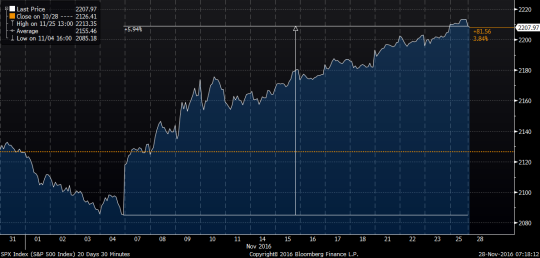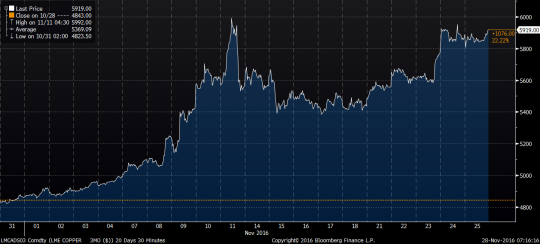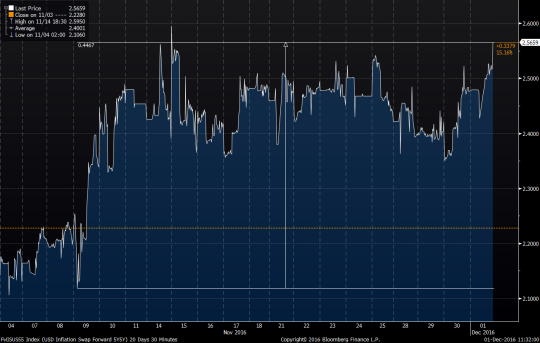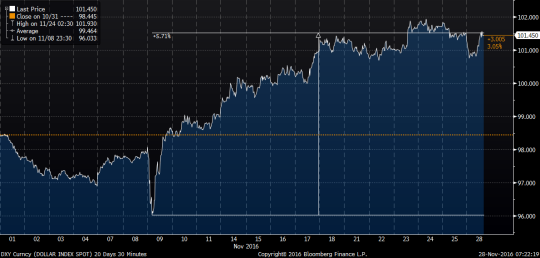Year end is a sweet time for bashing forecasters. Many investors take a savage delight in pointing how comically off particular economists or analysts were on this or that price, or event, in 2016. And then, without hesitation or irony, they proceed to read the forecasts for 2017.
Yogi Berra and others have said:
“It is difficult to make predictions, especially about the future.”
But instead of making light of forecasters, I will briefly discuss some limitations of using forecasts for trading.
There is a fundamental difference between analytical and strategic thinkers.
- Analytical thinkers focus on facts and evidence; partitioning or breaking down information into mutually exclusive categories with a goal of generating a solution to a problem.
- Strategic thinkers design systems of responses to various future situations, foreseen and unforeseen.
A great macro trader should at least be decent at one of those and a genius at the other.
I have always balked at questions such as “Where do you see the Euro at the end of the year?” Somehow even trying to think in those terms annoys me. In my book (Chapter 7), I advise specifying one of two features for every trade: time horizon or price target. Trying to do both seems too arrogant.
But forecasters are not stupid; they know the future is uncertain, but they are given a problem and need to come up with a number (e.g. GDP, exchange rate, election outcome, etc.). They are paid to deliver a prediction, and they do their best.
I. The first and simplest forecasting problem is determining the difference between the Expected Value (EV) and the most likely outcome.
The most likely outcome is what I call the “Central Scenario” – the direction things are heading if everything plays out most or less as expected (it rarely does!).
For example, a few months ago we could have correctly forecasted a single hike by the Federal Reserve that occurred in December.
The problem with the Central Scenario is it does not express in which direction the market is more likely to stray. This problem has been a fundamental issue, for example, with the continuously mispriced interest rate curve. For decades, both interest rate forwards and economists perpetually overestimated the average level of interest rates over any meaningful period.
For some charts and numbers, look up Chapters 2 and 3 of my book.
Over the last 40 years, short-term interest rates have exhibited a much stronger propensity to move dramatically lower than higher due to an exogenous event such as the Russian debt crisis, 9/11 or the Global Financial Crisis. To put it, in other words, there are surprise eases, but not surprise hikes.
It is not difficult to see how, over the long run, the outcome favors the bond bulls.
It is important to understand that forecasters are likely to aim for what they think to be the Central Scenario as it maximizes their chances of actually being close to right.
By way of example, consider the extreme case of betting $1 on “tails” on a coin toss. The tail-ish economists will forecast a $1 gain, while the heads-ish ones a $1 loss, both hoping to be right more than 50% of the time. But those who forecast $0, have no chance to be right!
Critically, it is up to traders to understand the paradigm and maximize the value of their portfolios.
II. The more subtle and pernicious problem has to do with creating a variant forecast.
So far we haven’t considered the divergence between forecasts and market forwards. But for a trader, only a variant view is of any value. If there is no such divergence – there is no trade.
Now an analyst trying to forecast, say, the year-end level of EUR/USD would have to deal with multiple moving inputs such as equities, interest rates, and commodities, not to mention geopolitical variables. To derive a Central Scenario, the analyst will use what they think are the Central Scenarios for each of the inputs whether or not they are aligned with market forwards.
Therein lies an enormous logical fallacy that few traders in my experience escape:
Unconsciously basing positions on a forecast for one asset class, which is relying on the divergent outcome of other asset classes.
Asset class interactions are discussed in Part III of my book, especially Chapters 11 and 12, but I will give just one example here.
At the beginning of 2016, there were a number of dollar bears (or at least skeptics). But when I dug deeper into their thinking, more often than not it turned out that their dollar view was predicated on the fact that the US economy was close to rolling over and the Fed was not likely to hike again or may even ease.
Yet, the market was predicting even more hiking than would actually happen for 2016. December Eurodollar futures ended the year far off the highs, but still higher than where it had started. And if one aligned with the earlier market forward, the dollar bearish view was unreasonable.
EDZ16 <Comdty>, 2016
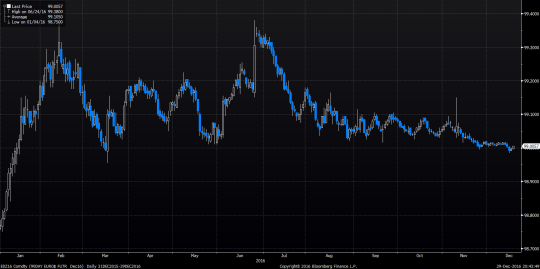
I have written many times how long dollar and long bond trades have been strictly superior to their opposites.
Indeed, classic bond futures have played out exactly as predicted by markets for two consecutive years (i.e. no P/L on a total return basis), in the environment of very robust job data.
Classic Bond Futures, 2014-2016
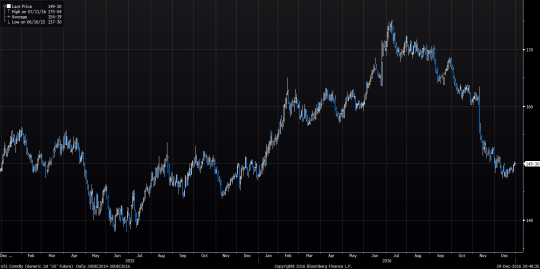
Meanwhile, the dollar index (we are charting DXY price which is conservative as dollar also has positive carry) made substantial gains in both years.
DXY <Curncy>, 2014-2016

It is not that dollar bears were wrong. We have all been both right and wrong multiple times. Rather the point is they would have done better by going to the origin of their view and being long bonds.
Good luck and Happy New Year!
